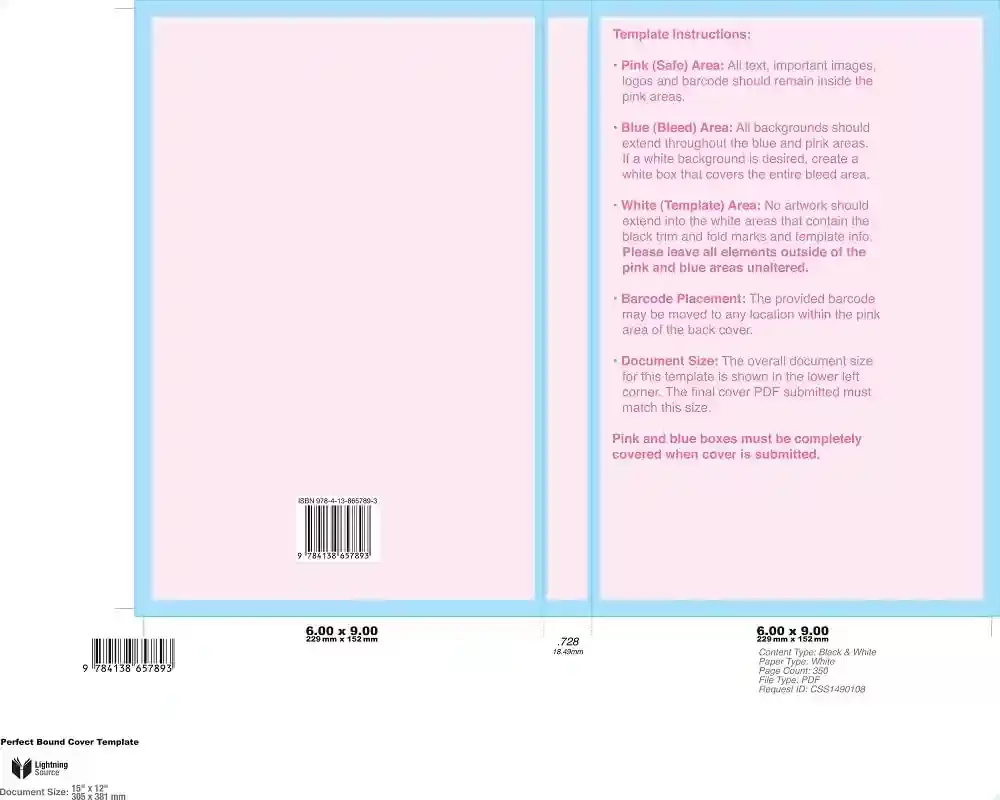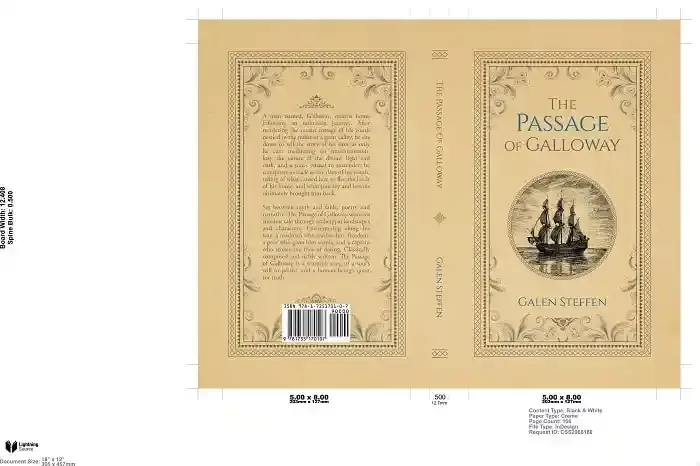|
If you’re self-publishing a book, you will find a great selection of print on demand services to choose from, they’ll offer varying options and services, but all of them will give you a path to getting your book in front of a reader. From a design perspective (and by this, I mean your book cover design), each print on demand service will vary with regards to how the book cover is created, the size, margins, spine width, format and even color profile. As each service will print your book slightly differently, you will find that each option will need to be created differently too. eBook Cover Designs If we first look at eBook covers, they are normally always created using RGB color (as this is designed for the screen) and have resolutions from 72 ppi to 300 ppi (pixels per inch). Their difference can come in the dimensions of the image, if you look at the following covers, you’ll see that the eBook design for Kindle (KDP) is narrower than the cover for LuLu. The dimensions vary slightly with KDP asking for their eBook covers to be 1600 x 2561 pixels, Smashwords and iBooks are both the same with 1600 x 2400 pixels working very well for their books, Nook eBook cover designs can be made to 1333 x 2000 and give a slightly wider feel to the design. However, Lulu’s eBooks are a great deal wider in their layout ratio and are currently sized at 1224 x 1584 (making the layout feel a little more like a square). So, which ever eBook publisher you decide to use, you should be aware of the impact that their format will have upon the book cover and it’s layout, you may find certain elements within your design becoming cropped out of the image when publishing across multi formats. Paperbacks The layout of your paperback will be a little more similar across the range of publishers, a book with a trim size of 6x9 via KDP will still be 6x9 when printed through Ingram Spark. However, the spine widths will differ (even with the same page count), you’ll also find that the construction of the cover (especially if you are using their templates) will be different too. Below are three templates used by KDP, Ingram Spark and Barnes & Noble for the same book, the template for B&N being more of a guideline for constructing the book cover itself. But the main thing you should notice is how all three publishers have different spine widths for the same book, this is due to the paper stock used by each, and it will mean that if publishing through different POD services, you will need different cover PDFs for each one. Hard Backs Currently, the most popular choice for indie authors to publish their book as a hard back is through Ingram Spark, they offer a wide range of trim sizes, the option for dust jacket and case laminate, they also offer the option of both, this is where the book has a dust jacket and underneath this the book has a case laminate cover. With a case laminate book, the cover extends past the edges of the book and is wrapped back around so that these edges fold onto the inside of the back and front pages and are glued in place (they are normally covered so that you don’t see them once the book is printed). With a dust jacket the layout is of course a great deal longer and you should take into consideration the use of the flaps (both front and back), these are normally used to add an author bio and add more detail for the blurb itself. The only other thing to point out with using Ingram Spark (for any of their printed books), is that they place more restrictions with regards to ink levels. With off-set printing, the book cover gets printed using four plates (Cyan, Magenta, Yellow and Black), if you were to print a page with all four of these plates at 100% output on each, then the outcome would be a completely black page and you would be printing at 400%. However, if you tried to print with much more than 240% output on all four plates the page would stay damp and end up smearing.
So, Ingram restrict the amount of ink to be used when printing their book covers to 240% max, this means that when designing the book cover, you need to reduce these levels within the PDF. This is something that most book cover designers are aware of and create designs for Ingram to these levels. Even with their restriction on ink, Ingram’s book covers always tend to print to a very high quality and we have always been impressed by their products. KDP now offer hardbacks for their authors too, you can see more on sizing and using their templates from our other article on Hardback templates with KDP Publishing. Trim sizes of Printed Books We also have a great article on Trim Sizes for Printed books which is worth taking a look at too, here we look at the standard sizes for the printed version of your book. When in doubt If you're still unsure what size your book should be, or how to size and create a book cover design, see how we can help you.
0 Comments
Your comment will be posted after it is approved.
Leave a Reply. |
JD&JCategories
All
Archives
July 2024
All information within this website (including its blog) is published in good faith and for general information purposes only. JD&J Design LLC does not make any warranties about the reliability and accuracy of this information. Any action you take upon the information in this website is strictly at your own risk. JD&J Design LLC is not liable for any losses and/or damages in connection with the use of this site and information.
|















